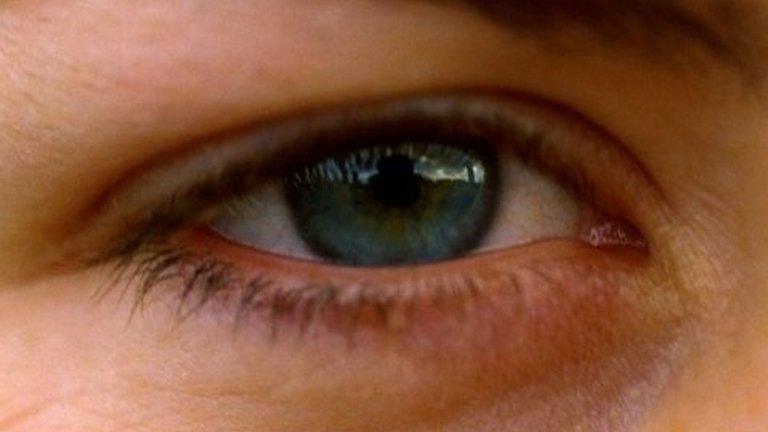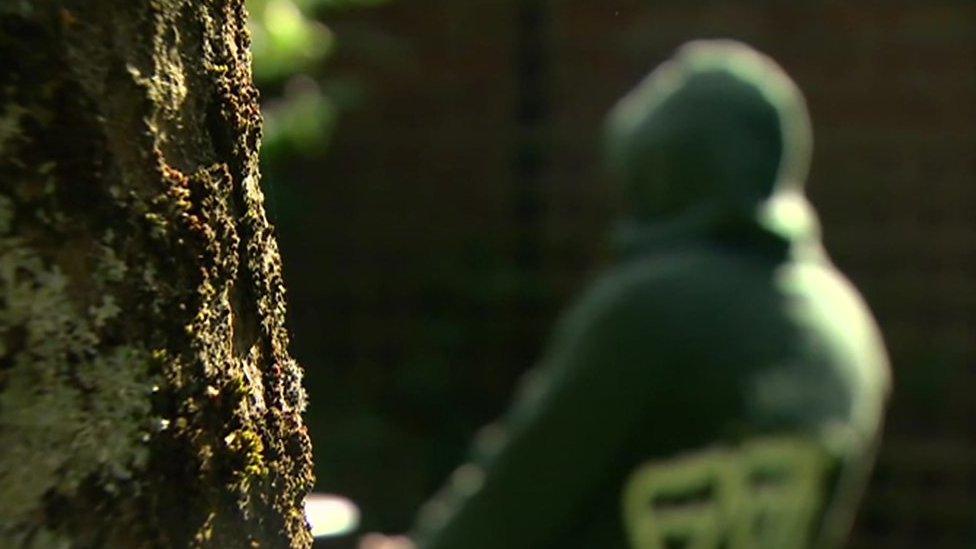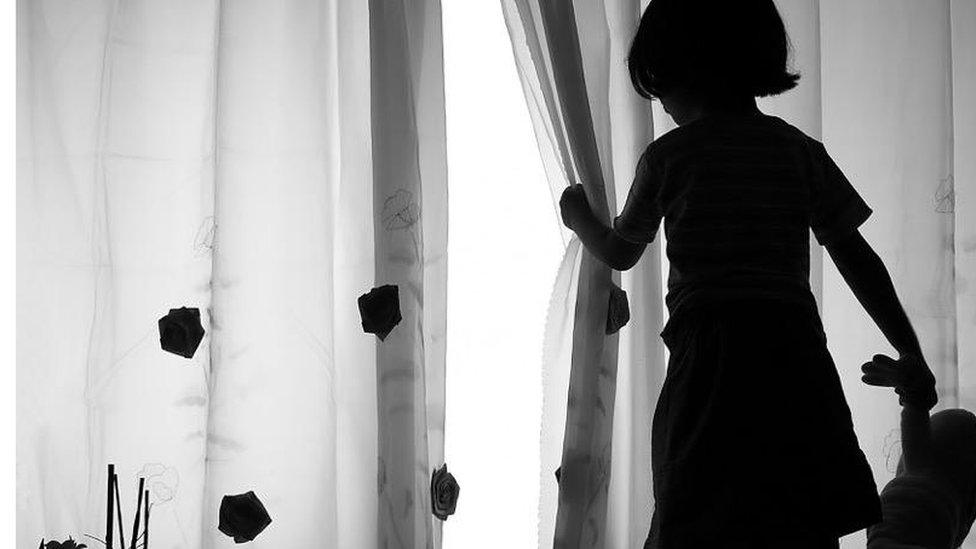Viewing of online child abuse images a 'social emergency'
- Published

The numbers of people viewing online child sex abuse images in the UK amount to a "social emergency", says the NSPCC.
A report by the charity suggests the number of individuals looking at such images could exceed half a million.
It is calling for a "robust action plan" to cut off the supply of content.
The Home Office says it is working with law enforcers, companies and voluntary organisations to stamp out online child exploitation.
In the past five years the number of offences recorded by police of viewing child sexual abuse images under the Obscene Publications Act has more than doubled across the UK, reaching a total of 8,745 in 2015.
But the NSPCC believes the true scale of offending in the UK to be far greater.
By applying the findings of a German population study, external - which looked into male self-reported sexual interest in children - to a UK scenario, the charity estimates there could be up to half a million men in the UK who have viewed child sexual abuse images. This is based on an estimated internet-using population of 21.63 million men aged 18-89.
This number is much greater than previous estimates.
'Shocking scale'
In 2013 it was suggested that around 50,000, external UK-based individuals were involved in downloading and sharing indecent images of children.
Last month, police chiefs said they feared the number might have risen significantly since then, with one report putting it at up to 100,000.
Simon Bailey, National Police Chiefs' Council lead for child protection, said the NSPCC's estimate "highlights the potentially shocking scale of what we are now dealing with".
On average, 375 offenders were arrested every month, he said.
He added: "We agree with the NSPCC that the police alone cannot stop the demand for child abuse images and more needs to be done to prevent abuse in the first place."
Stop it Now, external is a child sexual abuse prevention campaign run by the Lucy Faithfull Foundation. It offers information and support for users of illegal online images. From 13 October 2015 - 31 October 2016, 16,647 users accessed their anonymous self help section of the website.
People can also report illegal content through the UK charity, the Internet Watch Foundation (IWF). In 2015, it removed 68,092 URLs hosting child sexual abuse imagery.
The NSPCC is now calling for:
Internet firms operating in the UK to sign up to a set of minimum standards, enforced by a backstop regulatory power.
An independent annual audit of the current self-regulatory framework to ensure its effectiveness.
Government to produce an annual transparency report on the identification and removal of child abuse images accessed from within the UK.

Ann's story: 'It was completely traumatic'

Ann never suspected her husband (picture posed by model)
"It was just an ordinary day. I was getting the children ready for school and my youngest daughter came to say 'There's someone at the door'.
"There was a whole crowd at the door. I was taken to the kitchen. I was questioned about events I had no knowledge of. I found out later that my husband had been using my profile to contact other people.
"They went upstairs, got my husband out of bed and the police then took him away.
"Social workers had come ready to take the children.
"It was completely traumatic. I felt like my life had been turned upside down. Trying to recover from that was very difficult. You just never suspect your own husband.
"The charges became more serious. I was advised to have no contact with him.
"Even up to the trial he didn't believe he had done anything wrong.
"I would say to people in my position 'Talk about it. Talk to friends. It's the secrecy that keeps it going'."
Ann's husband was arrested on suspicion of downloading and distributing indecent images of children. He is currently serving a sentence for multiple child sex offences.
(Names have been changed to protect identity)

Peter Wanless, chief executive of the NSPCC, recognised progress had been made through the work of the National Crime Agency and the IWF but said more had to be done.
He said: "The sheer numbers of people viewing child sexual abuse images online must be addressed as a social emergency.
"It is two years since government made it a national priority to rid the internet of these vile crimes against children, but today's report reveals how horrifyingly prolific the problem remains.
"That's why today we are calling for a robust action plan to cut off the supply of child sexual abuse images in circulation, and deter adults from seeking out child abuse online.
'Dark corners'
"We should be long past the point when there are dark corners of the internet where these terrible crimes against children are hosted for the pleasure of paedophiles."
In a statement, the Home Office said: "We remain committed to working with partners in law enforcement, industry and voluntary organisations to stamp out online child sexual exploitation.
"The National Crime Agency has received additional funding of £10 million for further specialist teams, enabling a near doubling of their investigative capability, meaning more children being safeguarded.
"In recognition of the scale and global nature of this crime, the government has led international action on online child sexual exploitation through the WePROTECT Global Alliance, working with countries, the industry, and civil society organisations to develop a co-ordinated response."
- Published21 October 2016

- Published12 October 2016

- Published21 April 2016
